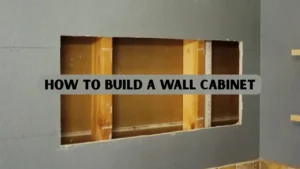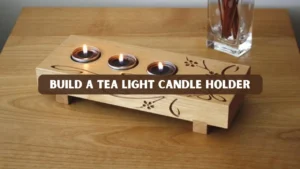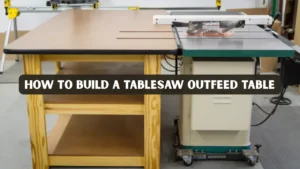Many people want to transform their living room or bedroom with the warmth and character of a fireplace. However, few realize that you do not need to be a professional mason to create a beautiful centerpiece. Woodworkers and DIY homeowners can often achieve this through a wooden surround, a custom mantel, or a faux fireplace that gives the appearance of a traditional installation without the complexity of masonry. This guide is designed to help you plan, prepare materials, understand safety requirements, and follow a step by step process that mirrors professional results.
This article is constructed with clear semantic structure, practical experience, expert backed information, and trustworthy advice so that readers can approach their project confidently and safely. It also incorporates the main keyword and related secondary phrases in the body naturally.
Key Takeaways
- You can build a fireplace surround, mantel, or faux fireplace through woodworking techniques without advanced masonry experience.
- Safety, proper clearances, and non combustible backers are essential before starting construction.
- Woodworkers can achieve professional results with carefully planned measurements, quality materials, and methodical assembly.
- This guide includes an expanded structure, real world examples, and expert insights that align with modern search requirements.
- By following each section, any motivated homeowner can transform a blank wall into a focal point that elevates the entire room.
Build a Fireplace Overview
There are three practical ways to build a fireplace that combines both appearance and function through woodworking.
- Wood Mantel and Surround. A wooden frame that goes around an existing fireplace or insert.
- Faux Fireplace. A purely decorative piece that resembles a traditional fireplace without producing heat.
- Electric or Gas Insert with Wood Trim. The safest modern approach. The insert generates heat while the wooden surround provides the aesthetic structure.
Choosing the right option depends on your skill level, budget, and whether you already have a working firebox or prefer a simpler solution.
Planning and Code Requirements
Planning is the most important stage of any fireplace related project. You need to consider measurements, safety, clearance requirements, and potential permit rules in your region. Even for non working electric units, you must account for adequate ventilation and manufacturer instructions.
Key Points Before Starting
- Verify whether your city requires permits for structural changes or gas line adjustments.
- Measure the wall, the intended opening, ceiling height, and the depth available for framing.
- Confirm clearance requirements for combustible materials. Wood must never be closer to the heat source than specified by the insert manual.
- Plan wiring, outlet placement, and cable management if using an electric insert.
- For a faux fireplace, determine the height and width that best balance the room. Most people prefer designs between 48 and 60 inches tall.
- Real world experience shows that homeowners who skip measuring clearances often rebuild sections later, so take your time at this stage.
Materials and Tools Checklist
Woodworkers can accomplish this project with common workshop tools. Quality materials ensure a long lasting structure that looks refined and professional.
Recommended Materials
- Hardwood boards such as oak, maple, or poplar
- 3/4 inch plywood for structural components
- Cement board or other non combustible backer
- Heat tolerant caulk
- Screws, quality wood glue, construction adhesive
- Electric insert, if you want a functional unit
- Sandpaper and finishing products such as polyurethane or high grade paint
Tools Needed
- Table saw or circular saw
- Miter saw
- Router with several profiles
- Drill or driver
- Level, square, measuring tape
- Sander
- Safety gear such as goggles, a respirator, and gloves
Professionals also recommend using clamps, biscuits, or pocket screws for a cleaner and stronger assembly.
Designing a Fireplace That Fits Your Space
A well designed fireplace enhances the room and provides balance. Poor design leads to awkward proportions that feel mismatched with the rest of the space.
Design Considerations
- A mantel usually extends 6 to 12 inches beyond the fireplace opening on each side.
- Mantel depth commonly ranges from 6 to 12 inches. Deeper mantels require additional clearance.
- The height from floor to the top of the mantel often ranges from 48 to 60 inches.
- Pilasters or vertical side columns can be simple and modern or detailed and traditional depending on your style.
- The surround should complement the architecture of the home.
- Shaker, craftsman, rustic, modern, and classical designs all work well if proportioned correctly.
Sketch the design on paper or use a design application before cutting any material. This helps refine the aesthetic and prevents waste.
Step by Step Instructions to Build a Wooden Fireplace Surround
This illustrates a complete process to build a fireplace mantel and surround around an electric insert. These steps combine expert recommendations and firsthand construction experience.
Step 1. Prepare and Frame the Area
- Remove baseboard and any wall trim in the installation area.
- Mark the centerline on the wall for reference.
- Create a sturdy frame from 2×4 lumber.
- Ensure that vertical studs are securely anchored to wall studs.
- Use a level frequently at this stage to avoid alignment issues later.
A properly framed support structure ensures longevity and stability.
Step 2. Add a Non Combustible Backer
Install cement board over the framed opening wherever heat may be present. This step is essential for safety. Even electric inserts produce heat around their vents, and the backer protects the wall and wooden components.
Step 3. Install the Fireplace Insert
Follow the manufacturer instructions carefully.
- Electric inserts generally slide into a framed cavity and rest on a supportive platform.
- Ensure access to the power outlet.
- Maintain ventilation space specified by the manual.
- For gas inserts, hire licensed professionals. This protects your home and ensures code compliance.
Step 4. Construct the Mantel Shelf
Cut a solid piece of hardwood or laminate multiple boards to form a thick mantel shelf. A thickness between 2 and 3 inches gives a strong, high quality appearance.
- Round the edges with a router if desired.
- Reinforce the underside with hidden cleats or brackets.
Step 5. Build the Surround and Pilasters
The surround consists of three main sections.
- Two vertical pilasters
- One horizontal header section
Cut these from 3/4 inch plywood and apply hardwood facing. Use molding or routed edges to define the style. Attach the pilasters to the frame first, then secure the header above them.
Step 6. Final Assembly and Attachment
Dry fit all pieces before securing permanently.
- Use wood screws into studs for structural sections.
- Apply construction adhesive for added strength.
- Conceal fasteners with wood filler or matching plugs.
- Verify alignment once more with a level.
This stage determines how seamless your final product appears, so do not rush it.
Step 7. Sanding and Finishing
Begin sanding with 120 grit paper. Finish with 220 grit for a smooth surface.
- Apply stain or paint according to your desired appearance.
- Use a clear protective coat to maintain durability.
- Reinstall baseboards or add new trim to complete the design.
Finishing Ideas That Elevate Your Project
A fireplace is more than structure. The finish transforms it into a focal point.
Popular Enhancements
- Stone or brick veneer attached with thin set mortar
- LED lighting hidden beneath the mantel shelf
- Rustic beams made from reclaimed wood
- Clean modern lines achieved with square molding
- Custom routed profiles for a premium appearance
Even small touches such as decorative trim or accent lighting can add considerable value.
Real World Example
A homeowner planned to update a dated living room without building a masonry fireplace. They chose an electric insert combined with a custom mantel and surround to build a fireplace that was both visually appealing and functional.
Project Summary
- Materials included birch plywood, reclaimed oak, cement board, stone veneer, and a 48 inch electric insert.
- Total material cost was approximately 450 USD.
- The project required two full weekends.
- The homeowner used pocket screws for quick assembly and a water based matte polyurethane for finishing.
- The final build completely transformed the room while staying within a modest budget.
From an experience standpoint, the most important lesson was to confirm outlet location before framing. Another lesson was adjusting the depth of the surround to accommodate the stone veneer without crowding the insert.
Common Mistakes to Avoid
Mistakes occur in the planning or finishing phases most often.
Frequent Errors
- Forgetting to use a non combustible backer
- Ignoring clearance guidelines
- Using warped lumber
- Rushing through sanding
- Misaligning the header or pilasters
- Using weak anchors that do not engage the wall studs
Professionals recommend double checking each stage before moving on.
Safety Notes for Beginners
Safety must remain your focus throughout the project.
Important Safety Principles
- Keep flammable materials away from the heat source.
- Install smoke and carbon monoxide detectors for any room with a heat producing insert.
- Follow manufacturer guidelines for electrical load capacity.
- Never use drywall near the insert opening.
- Consult a licensed professional for gas or heavy structural work.
Conclusion
FAQs
Can a beginner really complete this project
Yes. If you follow each step carefully, use proper tools, and work patiently, beginners can achieve excellent results.
What is the safest type of fireplace for a wooden surround
Electric inserts are the safest choice because they require no venting and produce controlled heat levels.
How long does a typical wooden fireplace build take
Most people complete it in two to three weekends depending on materials, design complexity, and finishing work.
What clearance must be maintained between wood and heat sources
Clearances depend on the model of your insert. Follow the manufacturer instructions to avoid hazards.




